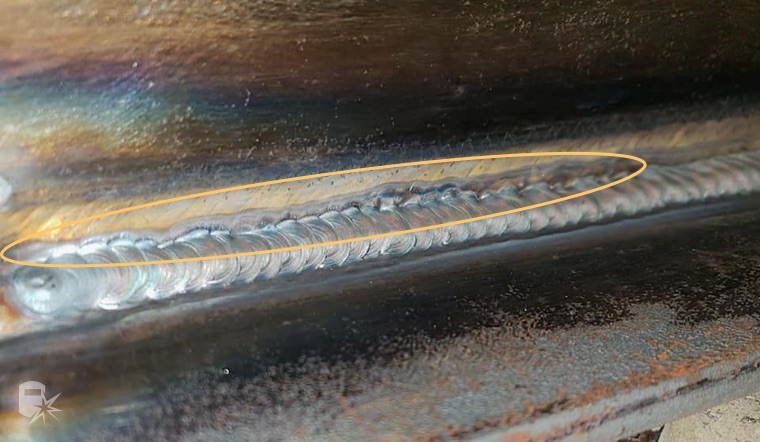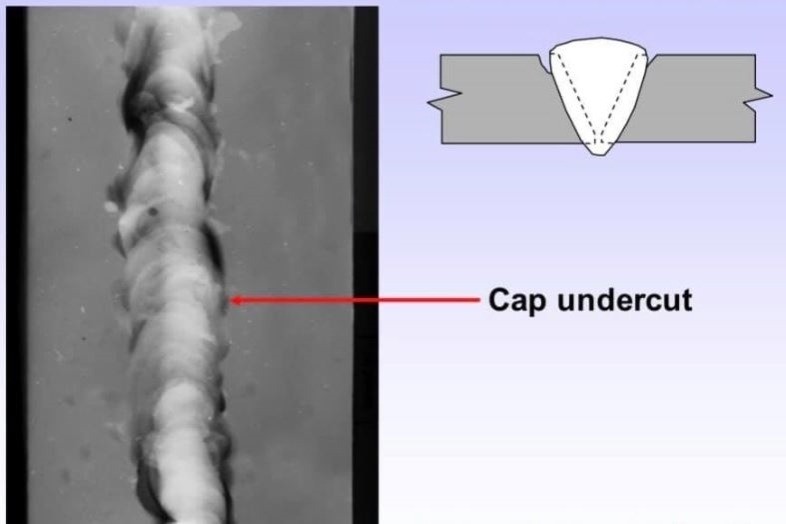Your Complete Manual to Preventing Weld Undercut Like a Pro
Vital Tips for Welders: Avoiding Undercut Welding and Ensuring Stronger Weld Joints
In the realm of welding, accomplishing strong and resilient weld joints is the cornerstone of producing high-grade job. One usual challenge that welders frequently run into is undercut welding, which can endanger the honesty of the weld joint.

Recognizing Undercut Welding
Undercut welding is a common welding defect that takes place when the weld metal falls short to correctly fill the groove and leads to a groove-like depression along the weld grain. This flaw damages the weld joint, making it prone to cracking and failure under stress and anxiety. Undercutting can be triggered by numerous elements, consisting of extreme welding existing, high welding speed, improper electrode angle, wrong electrode dimension, and inadequate welding strategy.
Among the major factors for undercut welding is a discrepancy in between the welding existing and the welding speed. If the welding current is also high or the welding speed is as well quickly, the weld metal may not properly load the groove, causing undercutting. Furthermore, utilizing an electrode that is too large can result in a similar result, as the excess steel can not appropriately move into the groove.
To avoid undercut welding, welders should ensure they are making use of the appropriate welding criteria, maintain a suitable electrode angle, select the proper electrode size, and practice appropriate welding strategies. By dealing with these factors, welders can decrease the risk of damaging and create stronger, more trustworthy weld joints.
Proper Welding Strategy
Efficient welding technique plays a critical duty in making sure the high quality and honesty of weld joints. Appropriate welding method includes a combination of adherence, ability, and precision to finest techniques. One fundamental element of appropriate welding technique is preserving the correct angle and range in between the welding weapon and the workpiece. Welders must additionally pay close attention to the travel speed and heat input to stop concerns like undercutting, porosity, or insufficient blend.
Additionally, a regular and constant hand motion is crucial for developing strong and sturdy weld joints. Welders must aim for smooth, consistent movements to make sure even circulation of the weld material. Proper manipulation of the welding weapon and filler product is additionally essential to achieving optimum infiltration and combination.
Moreover, controlling the heat input and choosing the ideal welding specifications based upon the material being bonded are essential elements in accomplishing top notch welds - Preventing weld undercut. Welders must adhere to the advised settings supplied by welding procedure requirements and adjust them as required based on the certain needs of the job. By grasping proper welding techniques, welders can considerably boost the strength and dependability of their weld joints
Choosing the Right Electrode
Maintaining the right angle and distance in between the welding gun and the work surface is basic when taking into consideration the value of selecting the ideal electrode in welding applications. The choice of electrode plays a critical duty in establishing the high quality and stamina of the weld joint. Electrodes come in various types, each developed for certain objectives and products.
To start with, selecting the appropriate electrode diameter is crucial. Thinner electrodes are ideal for welding slim materials, while thicker electrodes are much better for thicker products and higher warmth applications. Matching the electrode diameter to the thickness of the work surface aids accomplish a well balanced weld.
Second of all, recognizing the material structure of the electrode is vital. Various electrodes are designed for welding certain products like steel, stainless steel, aluminum, or cast iron. Using the correct electrode product guarantees great blend and decreases the risk of defects in the weld.
Lastly, taking into consideration the welding placement and method is important when picking the electrode kind. As an example, specific electrodes are better fit for vertical or overhead welding settings, while others work well for level or horizontal placements. Selecting the right electrode based upon the see welding method enhances the overall weld quality and honesty.
Preparing the Base Steel
To ensure a successful welding procedure, what first steps should be taken when preparing the base metal for welding? Additionally, any kind of existing weld product or deposit from previous welding should be eliminated to ensure additional resources a clean surface for the new weld.

Conducting Post-Weld Inspections

After performing these evaluations, welders need to contrast the outcomes versus market standards and project demands to guarantee that the weld joint satisfies all required standards. Any variances or inadequacies discovered throughout the post-weld examination ought to be quickly attended to through ideal corrective procedures to assure the weld's honesty. By carefully performing post-weld examinations and immediately addressing any type of issues, welders can maintain the quality and dependability of their work, eventually adding to the safety and durability of the bonded structures.
Final Thought

Finally, avoiding undercut welding and making certain more powerful weld joints call for a combination of correct welding strategy, selecting the right electrode, preparing the base steel correctly, and performing post-weld evaluations. By recognizing the sources of undercut welding and applying the needed safety measures, welders can create top quality weld joints that find out here satisfy sector standards and make certain the structural integrity of the welded parts.
Undercut welding is a common welding issue that takes place when the weld metal fails to appropriately fill up the groove and results in a groove-like clinical depression along the weld bead (Preventing weld undercut). Undercutting can be triggered by various aspects, including excessive welding present, high welding speed, incorrect electrode angle, inaccurate electrode dimension, and poor welding method
One of the primary factors for undercut welding is an inequality between the welding present and the welding rate. If the welding current is too high or the welding rate is also quickly, the weld steel may not appropriately fill up the groove, leading to damaging.Keeping the right angle and range between the welding gun and the workpiece is fundamental when considering the importance of choosing the ideal electrode in welding applications.